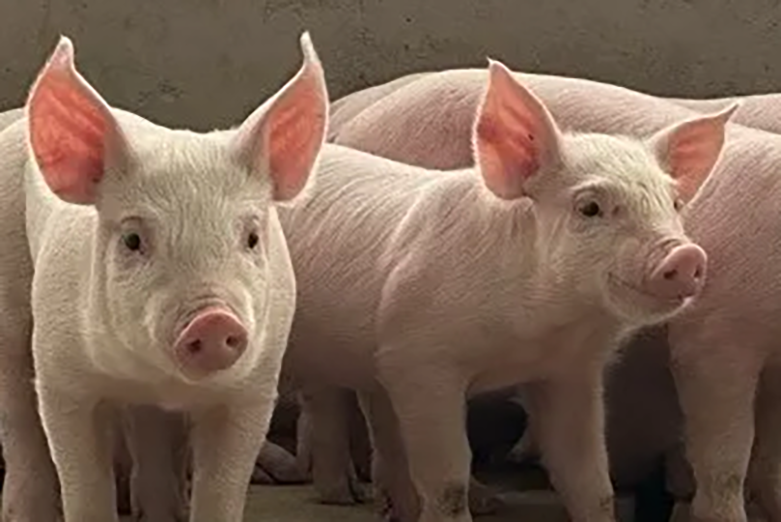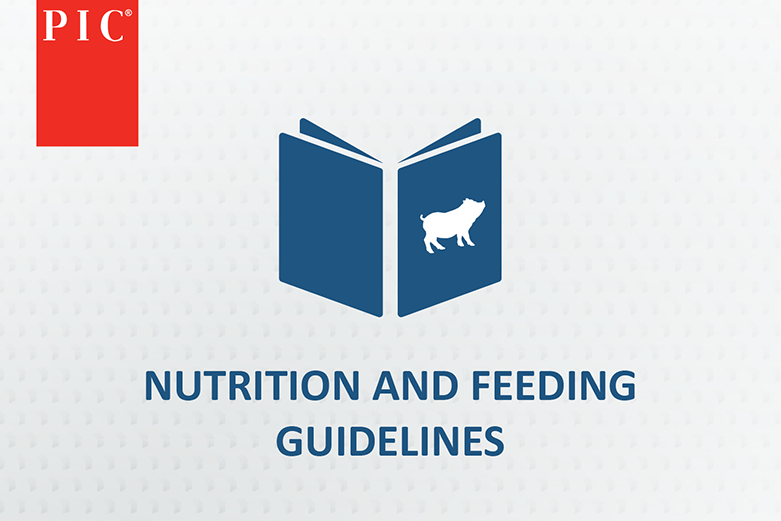Study Objective
This study examined how different feeding levels during gestation affect the reproductive performance of gilts during their first lactation.
Experimental Setup
A total of 1,187 PIC Camborough® gilts were studied. They were randomly assigned to four feeding groups, differing in daily energy intake:
- 5.0 Mcal ME/day (20.92 MJ ME/day) – throughout the entire gestation
- 5.9 Mcal ME/day (24.69 MJ ME/day) – throughout the entire gestation
- 6.8 Mcal ME/day (28.45 MJ ME/day) – throughout the entire gestation
- 5.0 Mcal ME/day (20.92 MJ ME/day) until day 90 of gestation, then 5.9 Mcal ME/day (24.69 MJ ME/day) until day 112
The gilts were housed individually in stalls and fed a gestation diet (2.95 Mcal ME/kg = 12.34 MJ ME/kg) via feed boxes.
Results
- Gilts receiving 6.8 Mcal ME/day (28.45 MJ ME/day) were heavier at farrowing than all other groups but lost more weight during lactation.
- Gilts fed 5.0 Mcal ME/day (20.92 MJ ME/day) had lower total maternal weight gain from breeding to weaning than gilts fed 6.8 Mcal ME/day (28.45 MJ ME/day).
- Higher energy intake improved body condition during gestation but led to greater losses during lactation.
- No differences were observed in backfat depth between groups.
- The number of piglets born, stillbirths, or mummified foetuses was not affected by feeding level.
- Gilts receiving 5.0 Mcal ME/day (20.92 MJ ME/day) had a higher percentage of live-born piglets than those receiving 5.9 Mcal ME/day (24.69 MJ ME/day).
- No differences were found in piglet birth weight, daily gain during lactation, piglet mortality, or the weaning-to-oestrus interval.
Conclusion
Increasing energy intake during the first gestation did not improve reproductive performance during the first lactation. Gilts fed 5.0 Mcal ME/day (20.92 MJ ME/day) gained less total weight but had a higher percentage of live-born piglets.
PIC Comments
Serhii Shevchenko, Technical Services, PIC Spain
This study is particularly significant due to the substantial number of animals included—1,187 PIC Camborough® gilts in total. This sample size is robust and provides representative and reliable data, giving the study both statistical and practical relevance for the swine industry.
One crucial factor when dealing with gilts is their weight and age at first mating, as these directly influence future reproductive performance. The study reinforces the importance of proper management during gestation, as feeding strategies directly impact weight gain during this period. Notably, gilts that received a higher energy intake (6.8 Mcal ME/d = 28.45 MJ ME/d) gained more weight but also lost more during their first lactation. This finding aligns with previous research, which indicates that increased feed intake does not necessarily lead to reproductive benefits, highlighting the importance of a well-managed feeding strategy.
The economic efficiency of a farm depends greatly on optimised feed management. In this case, while gilts that consumed more feed gained more weight, this did not translate into clear benefits during lactation, underscoring the need to refine feeding strategies.
Finally, it would be valuable to examine the performance of these gilts in subsequent reproductive cycles and evaluate their retention rate up to the third parity to gain a more comprehensive understanding of the long-term effects of feeding management during first gestation.
Dieser Artikel wurde ursprünglich in der spanischen Fachzeitschrift SUIS veröffentlicht.




